Lemon tart is a classic dessert renowned for its bright flavour and simple but elegant presentation. The zesty lemon flavour in a creamy custard filling served in a buttery pastry case can never fail to impress anyone. It is no wonder a lemon tart has remained a firm favourite dessert across the world!
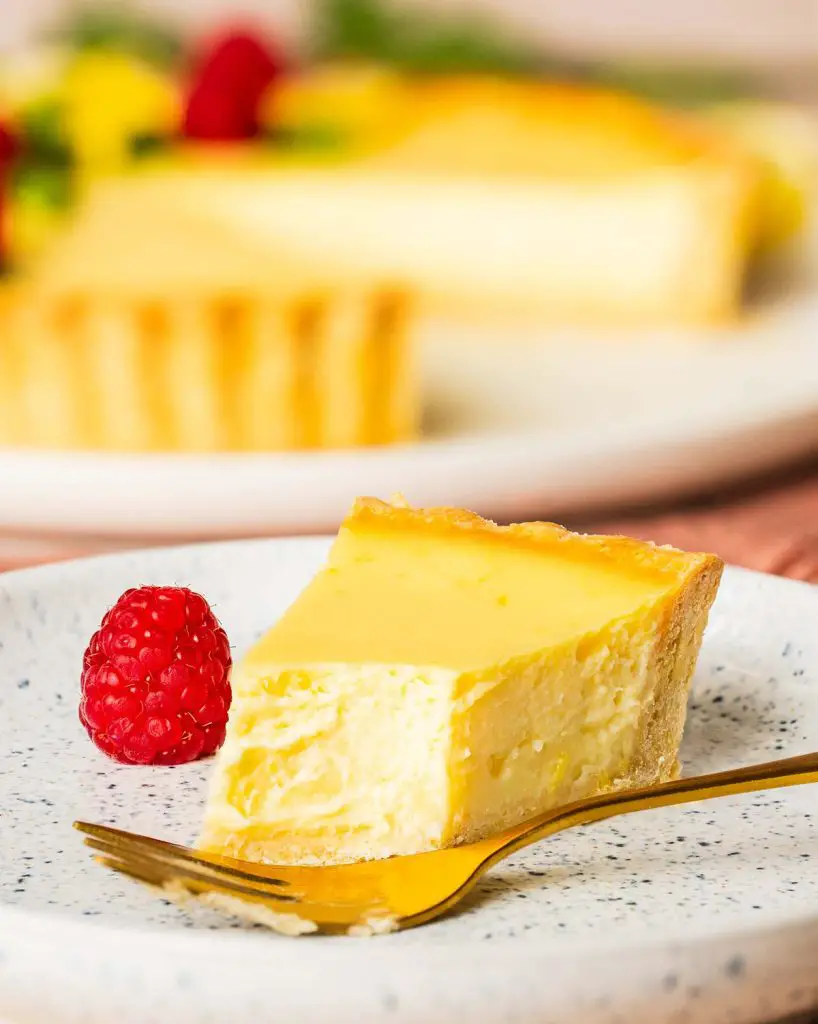
About French lemon tart tarte au citron
I find the evolution of food through time fascinating. In my opinion, no one place can truly claim a dish as its own, and the lemon tart is no exception.
Let us start with the pastry case. Pastry has been used in cooking all the way back to ancient civilisations, with Egyptians and Romans using their version of it to create dishes. In Europe, tarts have been used since the middle ages, being filled with both sweet and savoury ingredients. Fast forward to the 14th and 15th centuries, and tarts began to evolve more into what we recognise now. The introduction of new ingredients such as butter and sugar turned the pastry into a sweeter delight, as we know it today.
Lemons, despite how much they are widely used around the world now, actually originate from Asia, being brought to Europe during the Crusades in the 12th century. By the 17th century, lemons were commonly used in desserts, and by the 18th century desserts across Europe surged in popularity.
The lemon tart, or tarte au citron, became a symbol of sophistication, often being served at royal banquets and high end gatherings. In face, in 19th century France, the lemon tart was so well admired it was served to the King himself as a symbol of wealth and goodness.
You will love this simple lemon tart recipe because
- Everyday ingredients. This lemon tarts uses ingredients you likely already have at home, making it a fabulous, convenient and always delicious bake!
- Elegant baking. The beauty of this lemon tarts recipe is its understated elegance, for me. I have decorated it with slices of lemon, fresh raspberries and a few mint leaves, but leave it entirely undecorated and simply dust with a little icing sugar for just as enchanting a dessert.
- Easy entertaining. Since a French lemon tart has to be baked and chilled before serving, it is the perfect make ahead dessert to round off a fabulous meal with friends or family.

Ingredients in French lemon tart filling
- Flour: make sure to use plain/all purpose flour and not self raising flour to make this lemon tart recipe easy.
- Sugar: icing (powdered) sugar is used in making the pastry and in the tarts lemon filling.
- Unsalted butter: I like to use unsalted butter so I can control how much salt is in the bake. For best results, use cold butter when making the pastry.
- Eggs: only the yolks are used in the pastry, to add richness and flavour, and whole eggs to make up the lemon custard filling.
- Ice cold water: make sure to use cold water when making pastry. You want to keep the dough as cold as possible throughout the whole process.
- Lemons: the star flavour of this bake! Zingy and bright, it makes for such a delightful dessert! In our family, we like our lemon desserts to pack a punch, so do reduce the amount of lemon used if you prefer a softer flavour.
- Double cream: gives richness to the filling of my lemon pie tarts recipe.
Recommended tools for the tarte au citron
- Digital kitchen scales*: I always recommend using digital kitchen scales to weigh ingredients out over using a volume based measuring system, as cups. Weighing out the ingredients is much more accurate than measuring by volume, and will ensure better results in the cookies, so I would definitely take the plunge if you have not already.
- Measuring spoons*: for measuring smaller quantities such as tablespoons (tbsp) and teaspoons (tsp), a set of dedicated measuring spoons is a must! These are far more accurate than everyday eating spoons, and are really easy to get hold of too.
- Food processor*: a quick way to make the pastry. If you do not have a food processor, you can simply use your fingers to rub the ingredients together too.
- Sieve*: useful to remove lumps from the dry ingredients before blending together when making the pastry.
- Rolling pin*: for rolling out the pastry. If you do not have a rolling pin, get creative! A tall glass or even a wine bottle works well!
- Mixing bowl*: to make the recipe lemon tart filling in before pouring into the pastry case ahead of baking.
- Whisk*: for mixing together the lemon filling ingredients when making the tart.
- Lemon squeezer*: makes squeezing the lemons so much easier!
- Loose-bottomed tart tin*: makes it a lot easier to remove the tart from the tin without breaking it. I like using one with a fluted edge as I think it looks so very pretty. However even a loose bottomed cake tin (without the fluted edge) will work well too.
- Jug*: I use a jug to help accurately pour the basic lemon tart recipe into the prepared pastry shell.
How to make a lemon tart
Whilst there are a few more time-taking processes, making this easy lemon tart recipe could not be more straightforward! First, make the pastry and let it chill for about half hour. Then, roll out the dough and line the tart tin before chilling again. During the second chill, make the lemon filling. Bake and seal the pastry before pouring in the lemon filling and baking. Cool and chill before decorating as you wish to serve. Enjoy!

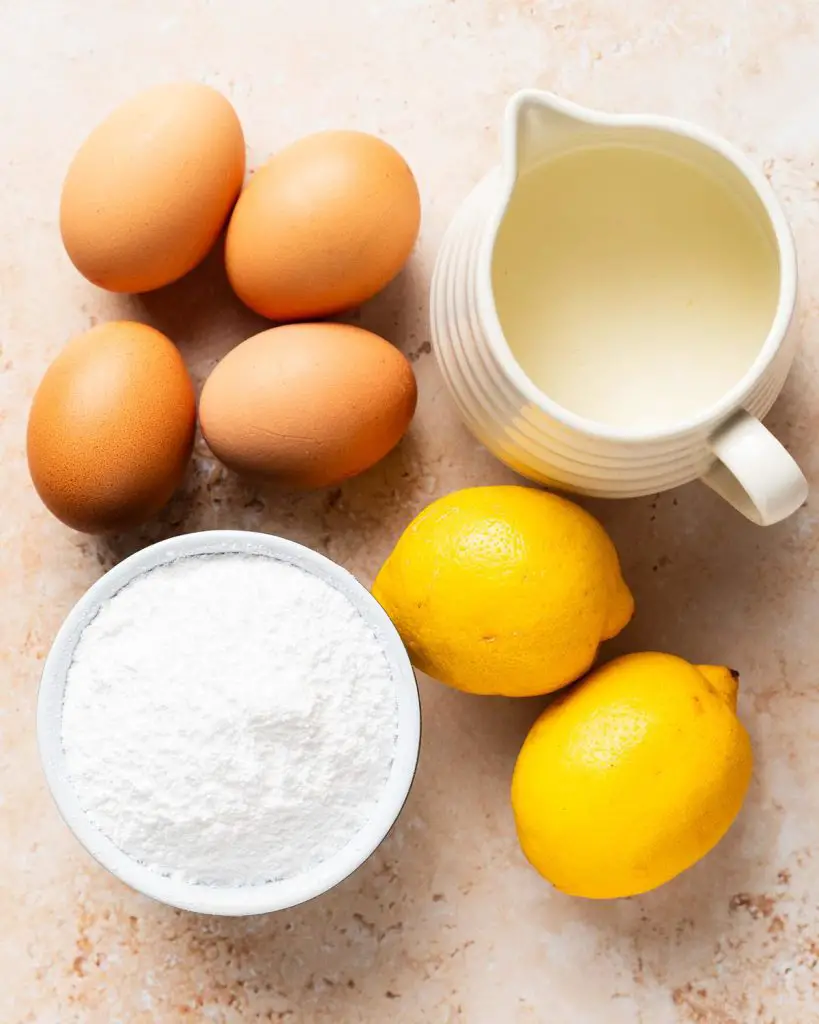
For the pastry
Step 1: First make the pastry. In a food processor or a large mixing bowl, mix together the flour and sugar. Add in the cubes of cold butter and cut or blend in until the mixture resembles fine breadcrumbs. Ensure no large chunks of unblended butter remain or it will speckle the pastry when it is rolled out. Tip in the egg yolks and blend again until just combined. Add in the ice water a little at a time until the pastry comes together in clumps.
Step 2: Tip the dough out onto a clean work surface and gather it together. Squeeze to bring it together, but try to avoid kneading and working it too much or the pastry will be tough. Divide the pastry dough into two equal parts and flatten into discs. Wrap each disc tightly in cling film then pop in the fridge to chill for at least 30 minutes. At this point, you can freeze the dough for another day, if you wish.
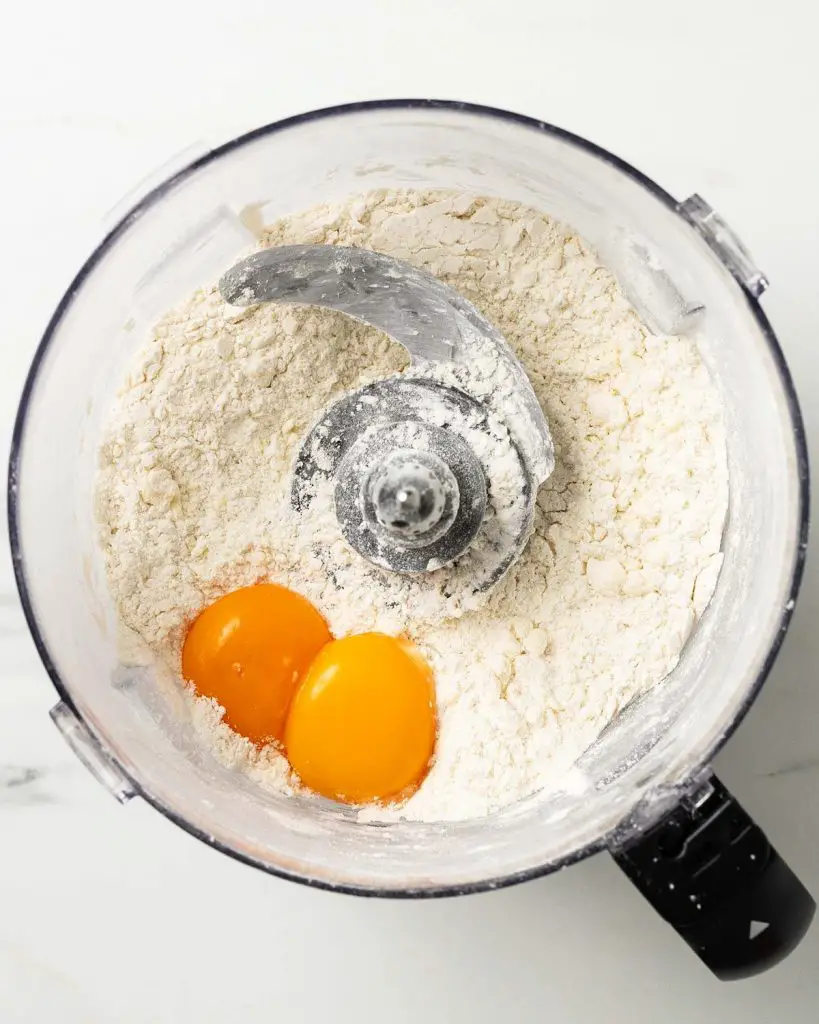

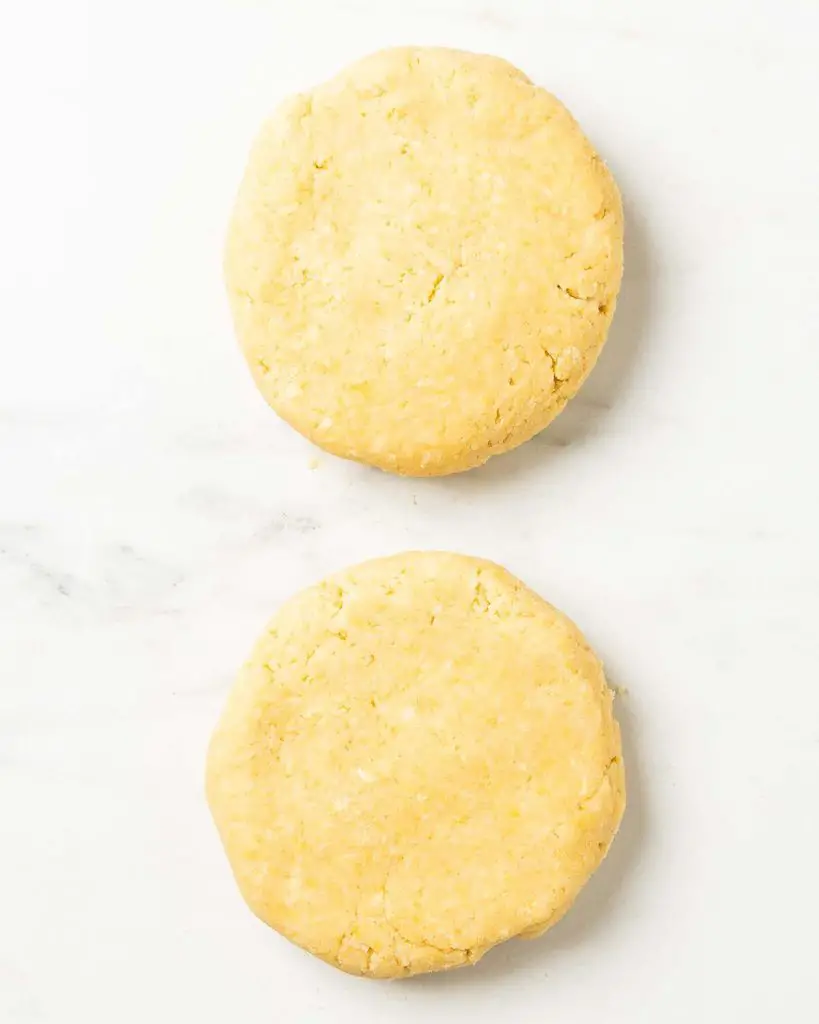
For the lemon filling
Step 1: Once the dough is made and has chilled, roll out the chilled pastry to a circle about 2″ larger than an 8″ tart tin. Fold it carefully over the rolling pin and lift it into the tin. Ease the pastry into the edges. Do not stretch the pastry to make it fit. After lining the tin with pastry, gently fold the overhang of pastry over the tip of the tin. Using the rolling pin, roll over the top of the tin to cut off excess pastry. Prick several holes in the bottom of the pastry, then pop in the fridge to chill for 30 minutes.

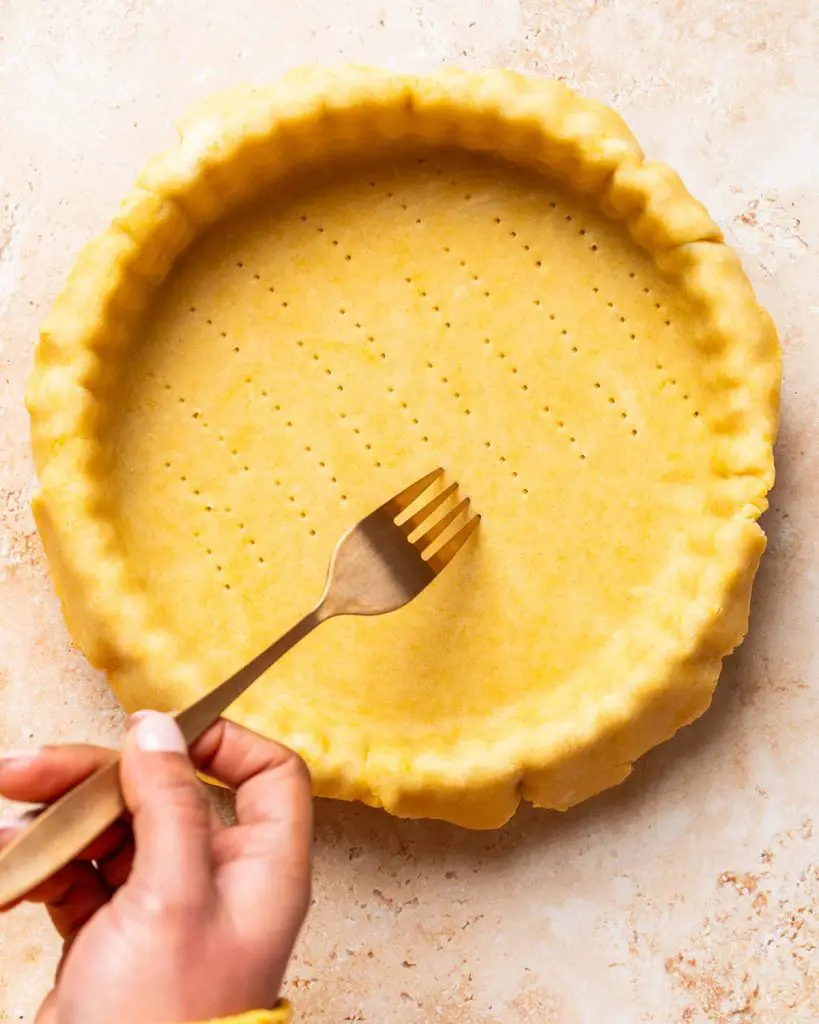

Step 2: To make the filling, zest the lemons into a large jug and place a sieve over it. Into a bowl, break the eggs then tip in the icing sugar and juice the lemons. Lightly whisk everything together, then pour in the cream and whisk until combined. Pour the filling into the jug through a sieve and stir through to combine the filling with the zest.
Step 3: Preheat the oven to 160C/320F. Line the chilled pastry with parchment and fill with baking beans. Bake the pastry shell blind for 10 minutes, then remove the parchment with the baking beans and bake for a further 20 minutes until golden brown and biscuity.
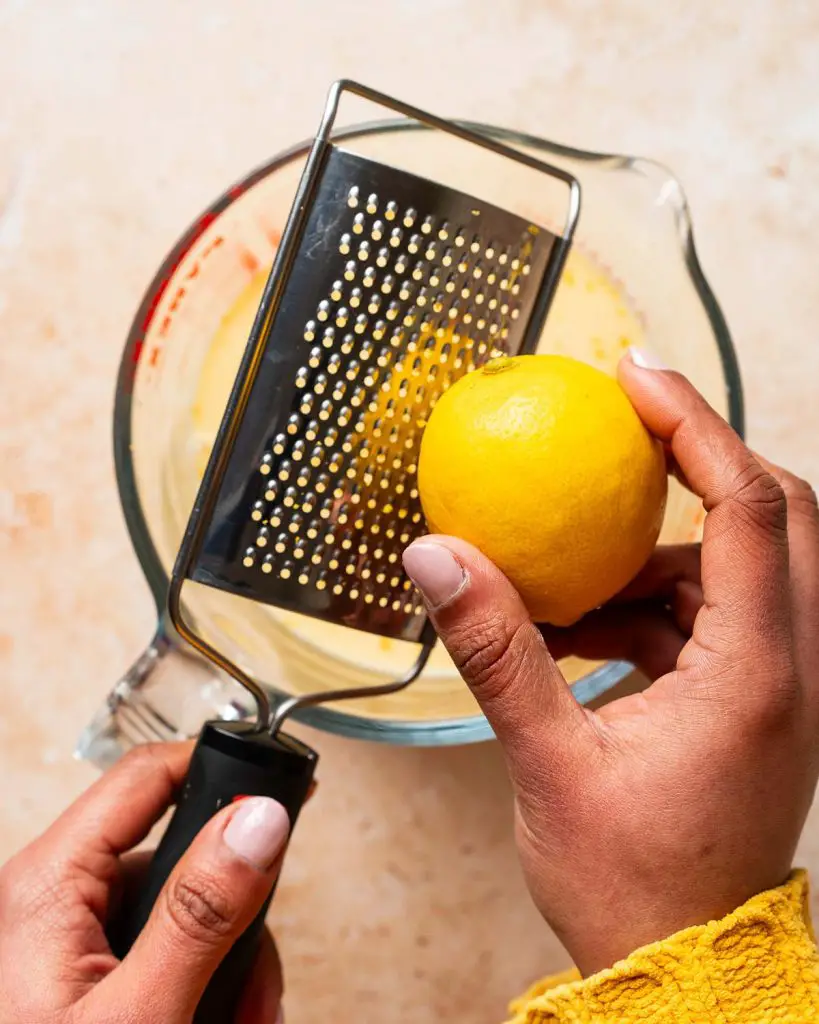

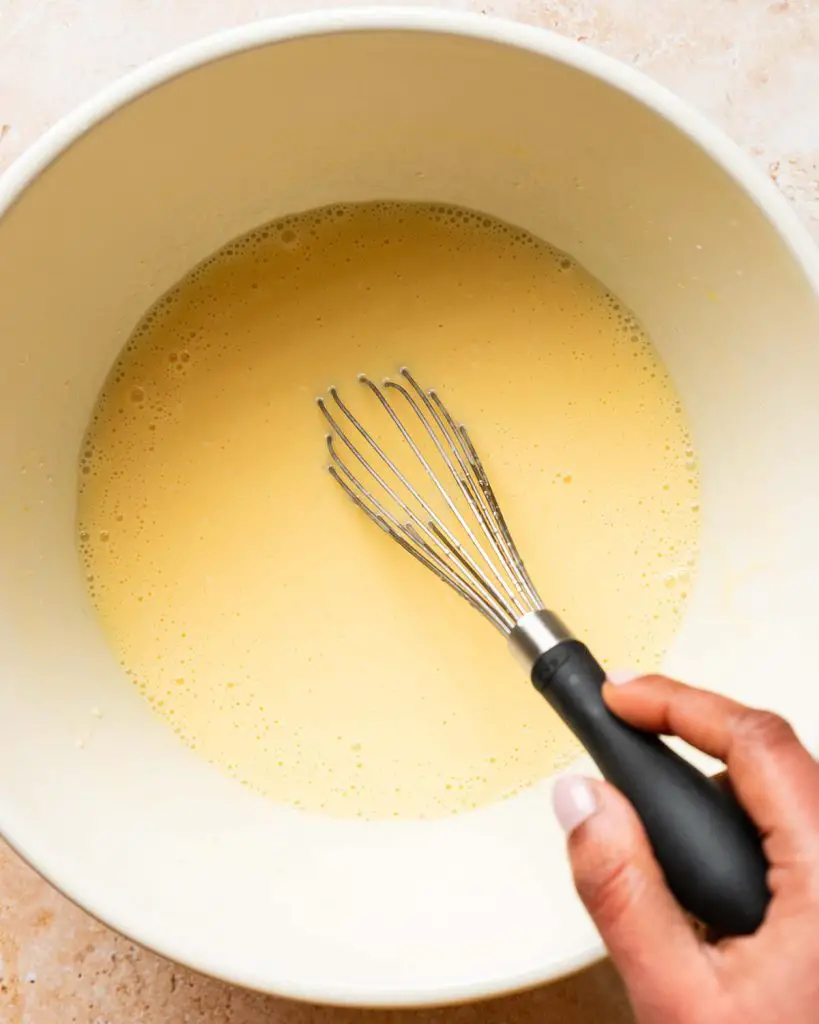
Step 4: Lightly brush the pastry with some egg white, then return to the oven for a further minute.
Step 5: Slide the oven shelf out and carefully pour the lemon filling into the pastry case, going as close to the top edge as possible. Slowly slide the shelf back in (to prevent spills), then bake the lemon tart for 25-28 minutes until the middle of the filling has a slight wobble. Leave to cool in the tin, then chill overnight.
For the decoration
Step 1: Cut four slices of lemon into discs and pat dry. Leave one slice whole, cut two slices in half and one slice into quarters.
Step 2: Arrange the lemon slices on the tart. Starting with the whole one in the middle of the pattern, working outwards on either side.
Step 3: Place a few raspberries in any spaces between the lemon slices.
Step 4: Finally, add a few mint leaves in any gaps, or near the raspberries. Enjoy!

Why is my shortcrust pastry fragile and crumbly when I try to roll it?
This is probably because the dough was too dry and needed a little more liquid in it. Simply break it up into crumbs again using your hands or a food processor. Blitz through enough liquid until the dough naturally forms clumps. Then bring it back together and chill before continuing as before.
Why is my shortcrust pastry tough after baking?
If the pastry is tough it is likely that too much gluten has developed in the dough. The most likely cause of this is overworking (over mixing or over kneading) the pastry dough when making and rolling it out.
Why is my shortcrust pastry sticking to my work surface/rolling pin?
The moisture in the dough makes it stick to surfaces. The solution here is simple. Just lightly dust the work surface and rolling pin with a little extra flour (not too much, as you do not want to dry out the pastry!) and try rolling it out again. As you roll, keep moving the rolled out dough, turning it through 90º each time, so it does not stick to the work surface. If you find it is not rolling out too easily, gently flop the pastry over your rolling pin to reveal the table below and lightly dust the surface under it with flour before rolling again. This should allow you to get a beautiful thin pastry.
Do I need to blind bake my pastry?
In this lemon tarts recipes, you will definitely need to blind bake (and then baked after blind baking too!) the pastry. This is required to seal the pastry since the filling is entirely liquid before baking. It helps to ensure you do not end up with a soggy pastry base.

How do I stop my lemon tart from cracking?
The filling of the lemon tart will crack for a couple of reasons. One, it could be that the tart was over baked, which will result in the filling shrinking as it cools causing it to crack.
Another consideration is that the pastry was not baked sufficiently to be sealed so as not to absorb extra moisture from the filling. If this happens, the filling will shrink causing it to form cracks too.
Lemon tart decoration suggestions
Should you wish, you can decorate your recipe for lemon tarts as I have (check out the details in the recipe card below). Alternatively, for an even simpler decoration, you could try any of the following:
- Lightly dust with icing (powdered) sugar.
- Pipe delicate swirls of lightly whipped cream on top.
- Top with any berries you wish: strawberries, blueberries, raspberries, the choice is yours!
- Garnish with candied lemon peel.
What to serve with lemon tart
Serve a lemon tart as a slice dusted with icing sugar, with some fresh berries or even topped with a swirl of whipped cream. All are delicious options that everyone will love!
Does lemon tart need to be refrigerated?
I would recommend storing this easy recipe for lemon tart in the fridge once baked and cooled. They can be served cold from the fridge or at room temperature, depending on your preference.
Can lemon tarts be frozen?
Yes, absolutely! To freeze, leave the tart to cool completely before wrapping individual slices in cling film and then in foil. Place in an airtight container and freeze for up to three months. To thaw, unwrap and defrost in the refrigerator overnight.

What are common lemon tart mistakes to avoid? My top tips:
- As an exception to most baking, make sure to use ingredients as cold as possible when making pastry: so cubed butter straight from the fridge and ice cold water. Keeping pastry cold helps avoid overworking the gluten and keep it relaxed to avoid shrinkage during baking.
- Handle the pastry dough as little as possible throughout making. This is especially important when bringing it together, as overworking the gluten will lead to tough pastry.
- When placing the pastry into the tin, try not to stretch the dough to make it fit. Stretching the dough may look fine once in the tin, but doing so will result in the dough shrinking back to its pre-stretched size and shape during baking, spoiling the look of the tart.
- Chill the pastry again once rolled and shaped into the tin. Chilling the pastry a second time allows the gluten to relax again, helping it hold its shape better and not be tough once baked.
- Giving the baked pastry a light egg wash seals the pastry further, helping to ensure the filling does not soak into the pastry, resulting in either a soggy pastry or cracks in the lemon filling.
- Fill the pastry to near the top with lemon filling. Pour as close to the pastry as possible to avoid any air bubbles getting caught in the custard.
- The lemon tart is baked when the middle of the filling still has a slight wobble. Remove from the oven but leave the tart in the tin to cool completely and firm up.
- Once cool, store the lemon tart in the fridge undecorated. decorate the tart as you wish just before serving.

Troubleshooting
If you have any other questions about this easy lemon tart recipe, please use the comments below to ask away and I will do my best to help. And if you do make this recipe for lemon tart, please take a moment to leave a rating and review below. I would love to know how you enjoy making it and following along, plus it really helps others looking for a similar recipe too. You could even post a picture on Instagram and tag me when you share it with the world, you know I love seeing all your bakes!
More delicious recipes for you to enjoy
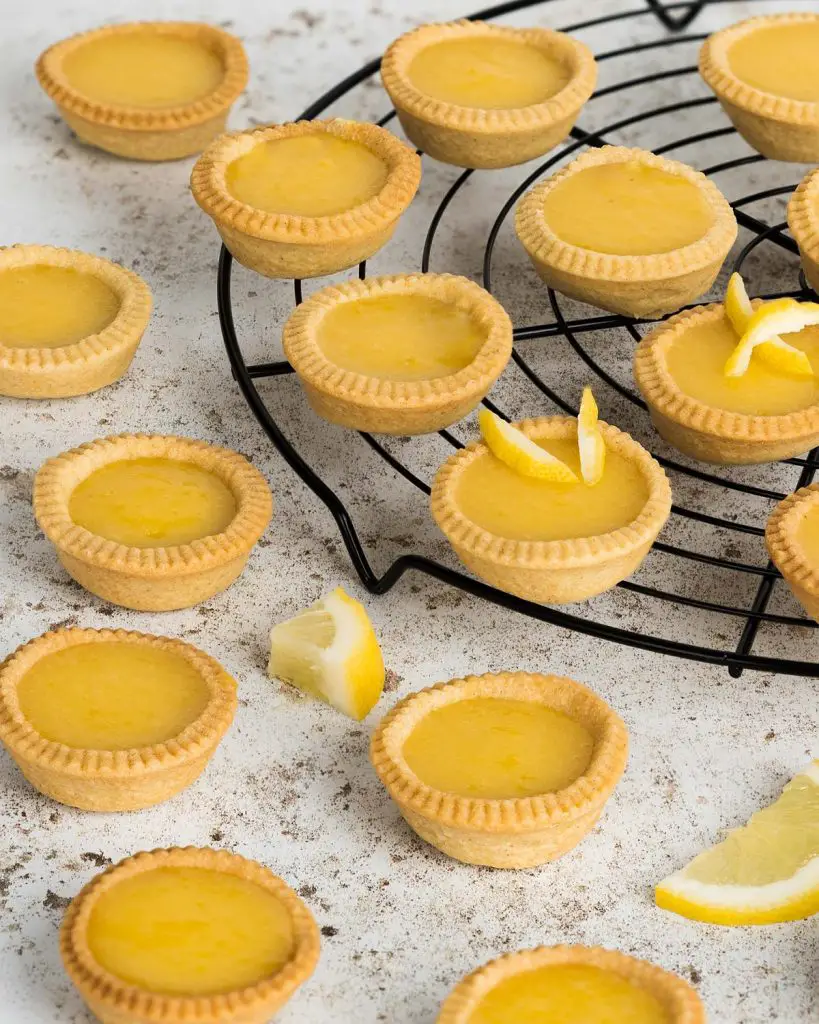
Lemon curd tarts: A delightfully joyful bake, these lemon curd tarts are sure to make you smile! A beautiful buttery mini shortcrust pastry shell filled to the brim with a bright and zingy lemon curd. The whole thing just melts in your mouth and is pure sunshine in a mouthful!
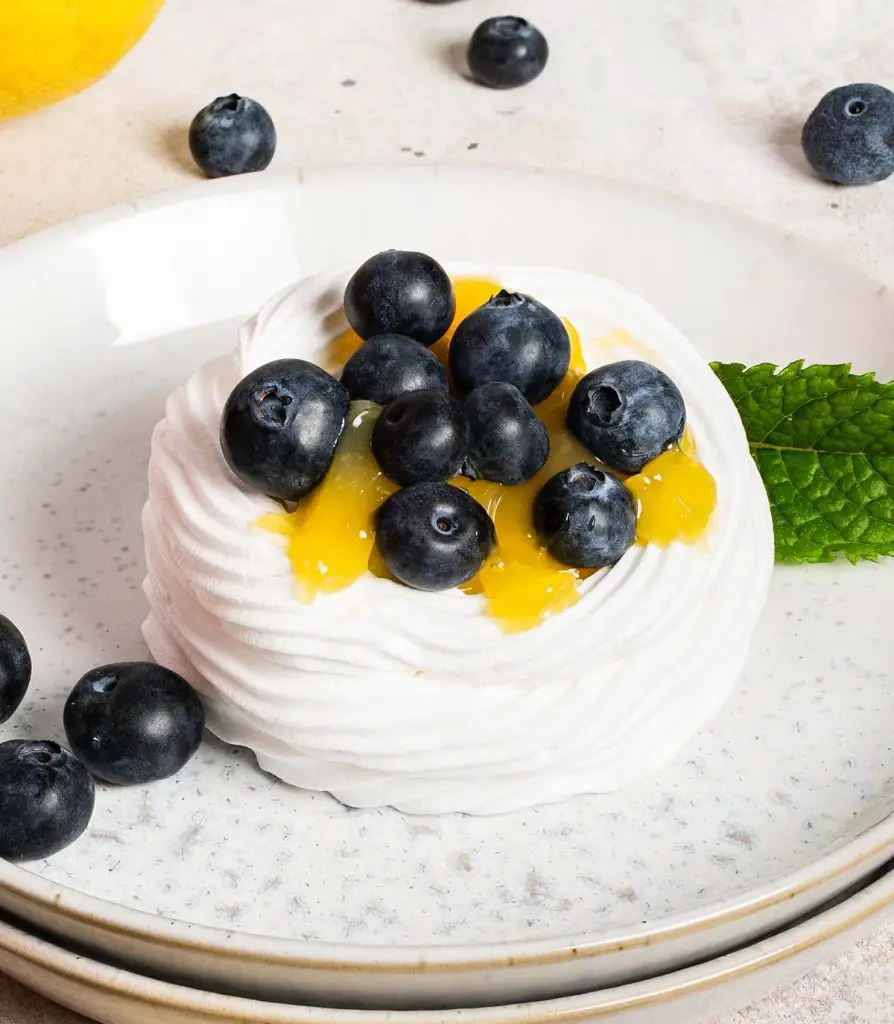
Lemon blueberry mini pavlova nests: Make the most of summer feels with these summery lemon blueberry mini pavlova nests. This gorgeous lemon and blueberry dessert brings summer into a deliciously tantalising sweet treat that just melts in the mouth.
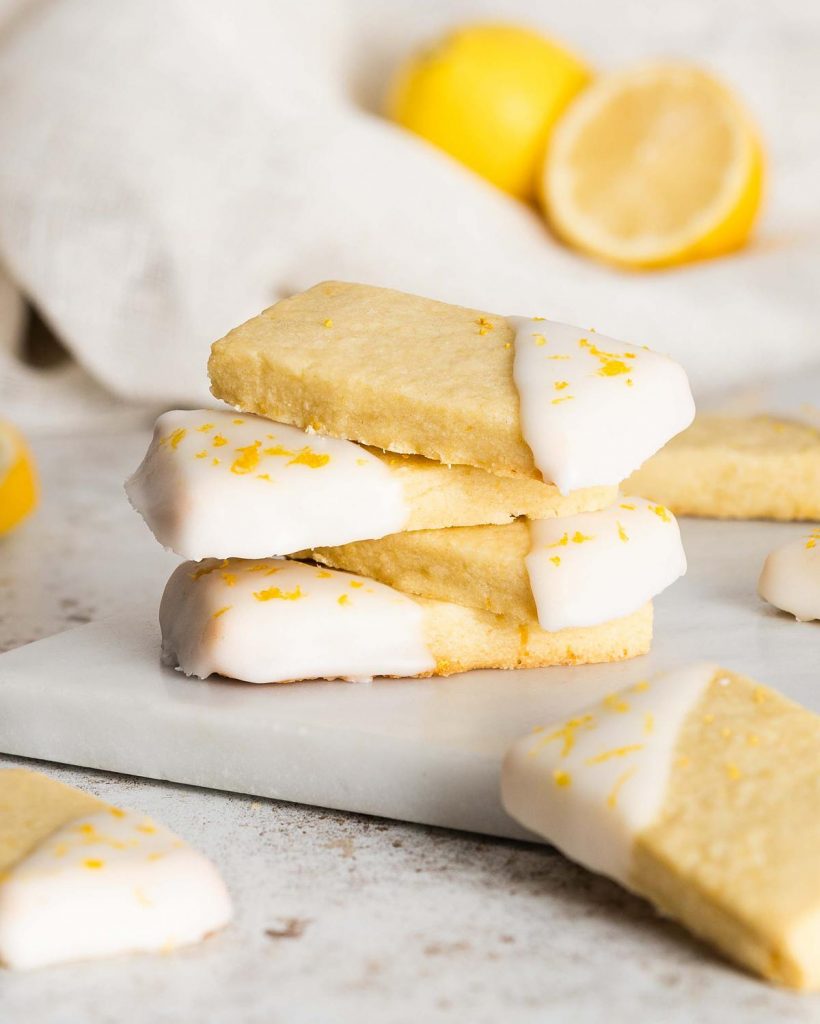
Lemon shortbread cookies: If you have been on the hunt for lemon shortbread cookies recipes, your search is now over! Today I am sharing with you the only lemon shortbread cookies recipe you will need! Wonderfully lemony, melt in your mouth shortbread cookies, topped with a zingy lemon glaze. Trust me, this one is the ultimate recipe for lemon shortbread cookies, everyone loves them!
Thanks for joining me today friends, and happy baking! x
Recommended equipment I used *
| Digital kitchen scales | Measuring spoons |
| Food processor | Sieve |
| Rolling pin | Mixing bowl |
| Whisk | Lemon squeezer |
| Loose-bottomed tart tin | Jug |


